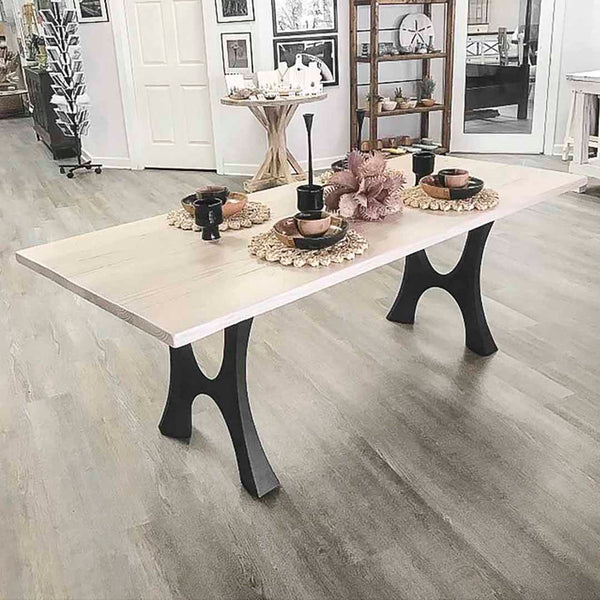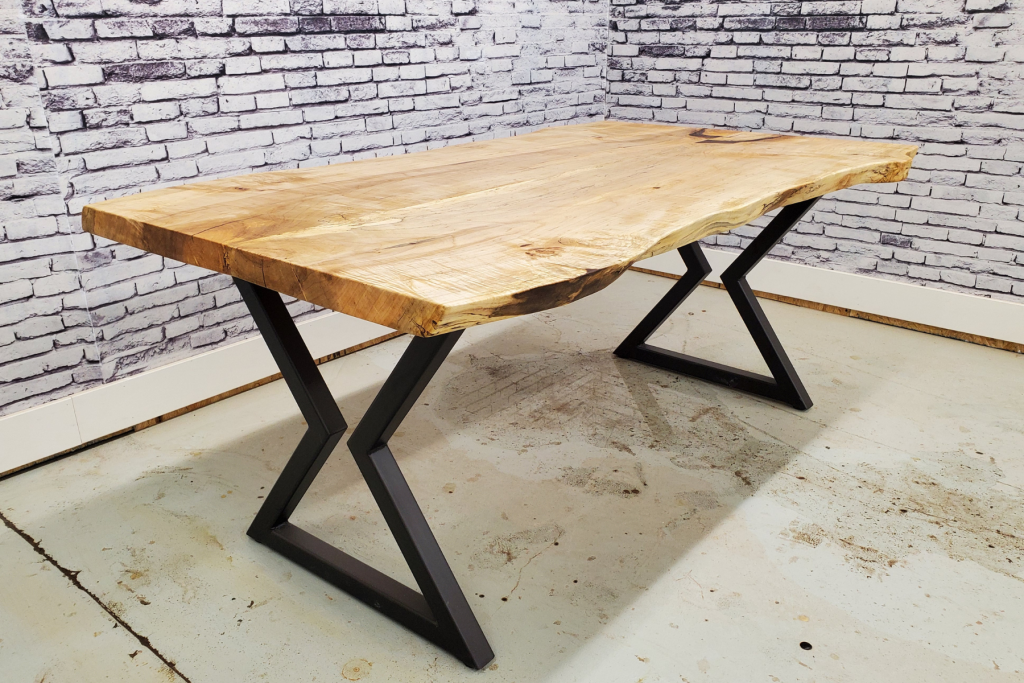Discover Affordable Sophistication in High-Quality Dining Table Legs Wood
Discover Affordable Sophistication in High-Quality Dining Table Legs Wood
Blog Article
Checking Out the Various Kinds of Table Legs Timber for Your Dining Room
The choice of dining table legs wood can exceptionally influence both the useful and aesthetic top qualities of your dining area. Strong wood alternatives, such as oak and walnut, offer a timeless look with unequaled longevity, while crafted wood alternatives use cutting-edge layouts that mimic the richness of natural grains.
Solid Wood Options

Additionally, solid timber is renowned for its strength and durability. Unlike engineered products, strong timber is much less vulnerable to bending and damage in time when effectively maintained. This makes it a suitable option for family members or those that frequently hold events. Each piece of strong timber is unique, showcasing individual qualities that include in the appeal and character of the table.
Additionally, solid wood can be ended up in numerous ways, varying from all-natural oils to discolored surfaces, enabling home owners to individualize their furnishings to match their style. In recap, picking strong timber for eating table legs not only guarantees structural stability but also enhances the aesthetic allure of the eating location, making it a rewarding financial investment for any home.
Engineered Timber Alternatives

Plywood, created from numerous layers of wood veneer, is stable and particularly solid, making it an exceptional choice for eating table legs. Its layered composition permits it to stand up to changes in moisture and temperature better than typical solid timber. MDF, on the other hand, offers a smooth surface area for painting or veneering, allowing designers to attain a refined appearance while preserving architectural honesty.
Particleboard, frequently made use of in affordable options, supplies decent stamina and is lightweight, making it much easier to handle. Nevertheless, it may not be as long lasting as plywood or MDF. When picking engineered timber choices, it is vital to take into consideration the intended use and wanted visual. These materials not just boost the functionality of eating rooms but likewise enable better design flexibility, making sure that standard and modern designs can exist side-by-side harmoniously.
Reclaimed Wood Features
Redeemed timber supplies an one-of-a-kind mix of sustainability and personality, making it a progressively prominent option for dining table legs. Sourced from old barns, factories, and other frameworks, redeemed timber symbolizes a history that new products just can not duplicate. Each piece carries its very own story, marked by distinct imperfections, knots, and differing grain patterns, which add to a table's special aesthetic charm.
In addition to its visual appeal, reclaimed wood is an eco-friendly choice. By repurposing formerly utilized materials, it lowers the demand useful reference for new lumber, thus assisting to preserve forests and minimize waste. This straightens with an expanding customer choice for lasting practices in decor.
Moreover, redeemed wood is typically extra resilient than recently gathered wood as a result of its age. The all-natural drying out procedure that redeemed timber special info goes through cause a denser and more powerful product, making it much less vulnerable to bending and splitting. This enhances the durability of eating tables, enabling them to stand up to the rigors of daily use.
Softwood vs. Wood
When selecting table legs, understanding the differences in between softwood and wood is essential for attaining both visual and functional objectives. Softwoods, originated from coniferous trees, such as want and cedar, are defined by their lighter weight and ease of control. They generally show an even more rustic appearance, making them ideal for country-style or casual eating spaces. Nonetheless, softwoods are usually much less durable than hardwoods, which can be a factor to consider for households or those looking for long life in their furnishings.
On the various other hand, woods, sourced from deciduous trees like oak, cherry, and maple, are renowned for their density, toughness, and resilience. The intricate grain patterns and abundant colors of woods give a classic and sophisticated appeal, making them excellent for official eating setups. While hardwoods often tend to be more expensive and much heavier, their strength versus deterioration frequently warrants the investment.
Ultimately, the option between softwood and hardwood for dining table legs ought to straighten with your design vision, use needs, and Click Here budget, ensuring that your dining area reflects your individual design while continuing to be functional in time.

Therapies and finishes
The visual appeal and durability of table legs can be substantially enhanced via various finishes and therapies. These procedures not only safeguard the timber from damage but additionally elevate its look, permitting it to complement diverse indoor designs.
One typical therapy is staining, which penetrates the timber and improves its natural grain while adding color. Stains give an abundant, classy look, allowing property owners to match their furniture with existing design. Conversely, clear finishes such as polyurethane or varnish develop a safety layer without altering the wood's original hue, ensuring durability against wear and tear.
Additionally, natural oils, like tung or linseed oil, nourish the timber and offer a subtle shine, all while being eco-friendly. These oils permit the surface to take a breath, preventing wetness accumulation and possible bending.
For those seeking a rustic beauty, weathered or distressed coatings can be related to create an aged look, including personality to the piece. Eventually, the selection of treatments and coatings depends on individual preference, preferred appearances, and the details timber type, making it vital to consider these elements when selecting dining table legs for your room.
Verdict
Strong woods, engineered choices, and redeemed choices each deal distinctive advantages, providing to numerous choices and needs. Eventually, the selection of wood kind ought to align with preferred style, longevity, and environmental factors to consider, boosting the overall dining experience.
The selection of eating table legs wood can greatly influence both the useful and visual top qualities of your eating space - Dining Table Legs Wood. Strong wood choices, such as oak and walnut, offer a timeless look with unequaled durability, while crafted wood options offer cutting-edge styles that mimic the richness of all-natural grains. Strong timber uses a timeless quality that can raise the general style of a dining space. Each piece of strong wood is distinct, showcasing specific qualities that add to the charm and personality of the dining table
Moreover, redeemed wood is often extra long lasting than freshly collected timber due to its age.
Report this page